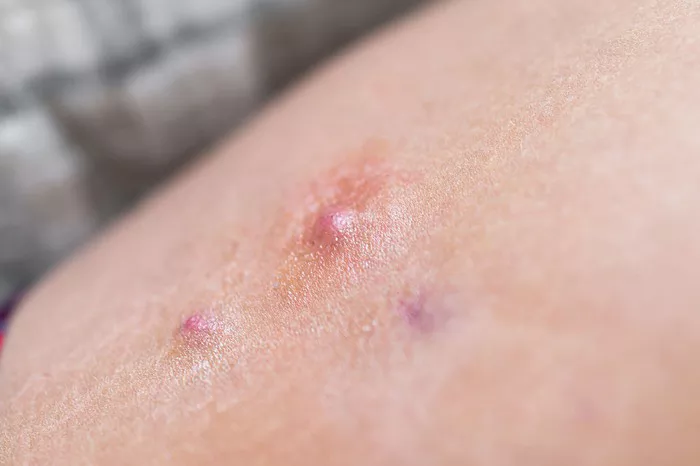Hidradenitis suppurativa (HS) is a chronic inflammatory skin condition characterized by painful, recurrent nodules and abscesses, primarily affecting areas rich in apocrine sweat glands such as the axillae, groin, and buttocks. The management of HS involves a multifaceted approach, including antibiotics, which play a crucial role in controlling disease progression and managing symptoms. However, selecting the most appropriate antibiotic regimen for HS can be challenging due to variations in disease severity, patient response, and potential antibiotic resistance. This article delves into the current understanding of antibiotic therapy for HS, highlighting the key considerations in choosing the best antibiotic regimen for individual patients.
Understanding the Role of Antibiotics in HS Treatment
The use of antibiotics in HS is based on the disease’s proposed pathophysiology involving follicular occlusion, inflammation, and secondary infection. Antibiotics are primarily employed for their anti-inflammatory and antimicrobial properties. They help reduce bacterial colonization, suppress inflammation, and prevent disease exacerbations. However, the efficacy of antibiotics can vary significantly among individuals, necessitating personalized treatment strategies.
Antibiotics as First-Line Therapy
In mild to moderate cases of HS, antibiotic therapy is often considered first-line treatment. Tetracyclines, such as doxycycline and minocycline, are frequently prescribed due to their broad-spectrum activity against gram-positive and anaerobic bacteria. These antibiotics inhibit bacterial protein synthesis and possess anti-inflammatory properties, making them effective in reducing HS-related inflammation and preventing disease progression.
Choosing the Right Antibiotic: Factors to Consider
1. Disease Severity: The severity of HS guides antibiotic selection. Mild cases may respond well to topical or oral antibiotics, while severe cases might require more potent systemic antibiotics.
2. Patient Response: Monitoring patient response is crucial. Some individuals may experience significant improvement with certain antibiotics, while others may require alternative regimens due to inefficacy or adverse effects.
3. Antibiotic Resistance: Chronic antibiotic use can contribute to bacterial resistance. Selecting antibiotics with less propensity for resistance is important to maintain long-term efficacy.
4. Comorbidities and Allergies: Consideration of patient allergies and comorbidities is essential to avoid adverse reactions and drug interactions.
Antibiotic Classes Used in HS
1. Tetracyclines
Tetracyclines are among the most commonly prescribed antibiotics for HS due to their anti-inflammatory properties and efficacy against the bacteria associated with HS, such as Cutibacterium acnes and Staphylococcus aureus. Doxycycline and minocycline are preferred choices due to their good tissue penetration and manageable side effect profiles.
2. Clindamycin
Clindamycin is effective against anaerobic bacteria and is often used in combination with other antibiotics or topical therapies for HS. However, its use is limited by the risk of developing resistance and gastrointestinal side effects.
3. Rifampicin
Rifampicin is another antibiotic used in combination therapy for HS. Its potent anti-staphylococcal activity makes it effective in reducing bacterial load and inflammation in severe cases of HS. However, its use is often limited due to concerns about the development of resistance and potential drug interactions.
4. Treatment Regimens
The duration of antibiotic therapy for HS varies based on disease severity and patient response. Generally, treatment is initiated with a systemic antibiotic for several weeks, followed by reassessment of disease activity. Maintenance therapy with topical or intermittent oral antibiotics may be necessary to prevent relapse.
5. Combination Therapy
In cases refractory to conventional antibiotic monotherapy, combination therapy involving two or more antibiotics with complementary mechanisms of action may be considered. Combining antibiotics with different spectra can enhance efficacy and reduce the risk of resistance development.
Monitoring and Long-Term Considerations
Regular monitoring of HS patients on antibiotic therapy is essential to evaluate treatment response, assess for adverse effects, and detect antibiotic resistance. Long-term use of antibiotics should be approached cautiously due to the risk of microbial resistance and adverse effects, necessitating periodic reevaluation of treatment strategies.
Conclusion
Selecting the best antibiotic regimen for HS requires careful consideration of disease severity, patient characteristics, antibiotic efficacy, and potential adverse effects. Tetracyclines remain a cornerstone of antibiotic therapy for HS, although individualized treatment approaches incorporating combination therapy or alternative antibiotics may be necessary for refractory cases. Continued research into the pathogenesis of HS and antibiotic resistance will further optimize treatment strategies and improve outcomes for patients with this challenging dermatologic condition.
Related Topics:


























